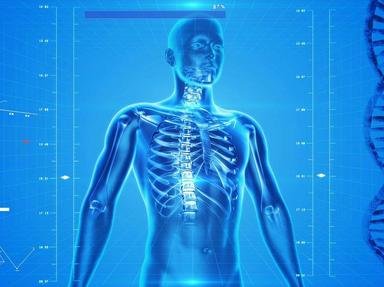Quiz Answer Key and Fun Facts
1. The part of the body between the diaphragm and the pelvis.
2. These are cranial nerves that control movement of an eye muscle.
3. The organs that contribute to digestion, although digestion does not actually take place within them.
4. A cell that stores fat is called an adipocyte.
5. The air sacs of the lungs where gas exchange takes place.
6. A digestive enzyme that breaks down starch to maltose.
7. The valve located at the junction of the left ventricle and the aorta.
8. The part of the skeleton consisting of the shoulder and pelvic girdles and the bones of the arms and legs.
9. The first cervical vertebra which supports the skull.
10. The part of the outer ear outside of the skull.
11. Muscles that have opposing or opposite functions.
12. The autonomic nervous system is actually a part of the central nervous system.
13. The tissue fluid of the eyeball.
14. The cells of the islets of Langerhans in the pancreas that secrete glucagon.
15. The upper chambers of the heart.
Source: Author
Morrigan716
This quiz was reviewed by FunTrivia editor
crisw before going online.
Any errors found in FunTrivia content are routinely corrected through our feedback system.


